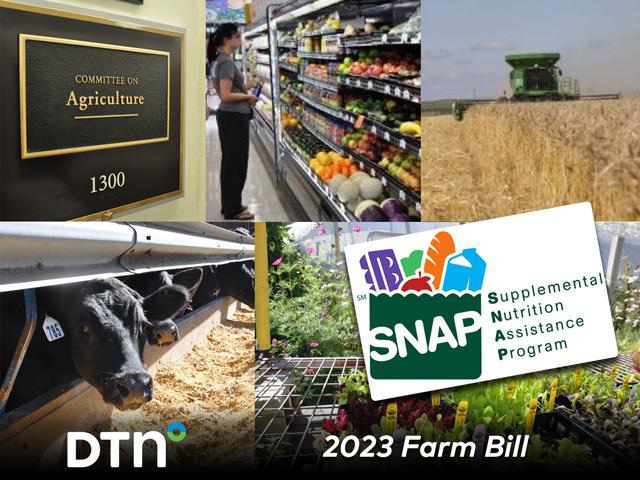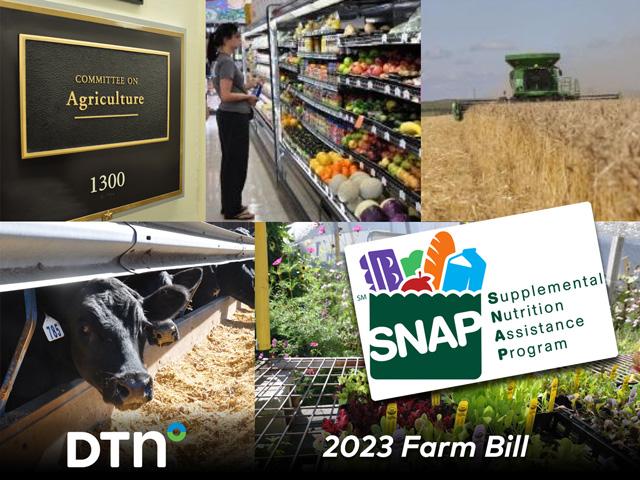Ag Policy Blog
GOP: CBO Baseline Shows SNAP Problems, Little Commodity Funding
Sen. John Boozman, R-Ark., ranking member on the Senate Agriculture Committee, said Wednesday that the Congressional Budget Office's release of the baseline for the 2023 farm bill showed that the Biden administration's re-evaluation of the Thrifty Food Plan that plays a role in determining Supplemental Nutrition Assistance Program (SNAP) benefits will create problems for the 2023 farm bill.
Ahead of a Senate Agriculture Committee hearing Thursday at which Biden administration officials will testify on the nutrition programs, Boozman said in a news release, "The baseline presents a challenge. It shows that the Biden administration's improper, sloppy reevaluation of the Thrifty Food Plan will continue to dramatically increase SNAP spending during the span of the next farm bill and drives the cost of the legislation to record heights.
"The total for all non-nutrition-related programs is approximately $225 billion. The 2021, 2026, and 2031 updates to the Thrifty Food Plan alone will cost more than all the spending outside the nutrition title. This is unsustainable and must be thoroughly debated as Congress considers the next farm bill.
"We are looking at the most expensive farm bill ever, and the administration's lack of good judgement and poor decision-making will make this farm bill a much heavier lift for Congress."
The re-evaluation led to an increase in SNAP benefits. CBO said the SNAP outlays are projected to fall by $21 billion in 2023 to $127 billion because pandemic-related benefits will end, but that benefits will be substantially higher in future years than they were in 2020 when the cost was $79 billion.
The Government Accountability Office (GAO) issued a report in December that said USDA "made this update without key project management and quality assurance practices in place."
The CBO forecasts for USDA's two main commodity programs -- Price Loss Coverage (PLC) and Agricultural Risk Coverage (ARC) -- right now are forecast through 2025 to each pay out few payments, largely due to higher commodity prices and stagnant reference prices in the farm bill. CBO scored higher payments for PLC and ARC in later fiscal years. PLC is forecast to cost $32.1 billion from FY 2023-33 while ARC-County is forecast at $16.2 billion over that time. CBO estimates the bulk of those payments do not begin until 2026, suggesting either changes in policy or declines in commodity prices.
CBO also projects a roughly a $2 billion a year increase in costs for crop insurance over the next decade as well, scoring out at $23 billion over ten years. CBO forecasts crop insurance insured acreage will top 510 million acres for FY 2023 and will eventually rise to cover 549 million acres.
Due to the Inflation Reduction Act, conservation programs such as EQIP and CSP see an injection of funds through FY 2026 then they taper off to base funding levels.
P[L1] D[0x0] M[300x250] OOP[F] ADUNIT[] T[]
House Agriculture Committee Chairman Glenn "GT" Thompson, R-Pa., said, "Today's CBO baseline release underscores what I have been consistently hearing from producers across the country -- in light of record-high input costs and volatile markets and weather, improvements to farm policy are warranted.
"Additionally, the roughly 80% increase to the baseline for nutrition programs since the last farm bill was enacted -- namely due to the Biden administration's careless update to the Thrifty Food Plan -- furthers the committee's obligation to oversight and accountability.
"The committee will continue its assessment of the programs under our jurisdiction as we seek to craft a farm bill that meets the needs of our nation and revitalizes rural America."
The House Agriculture Committee said in analysis of the CBO report said that "today's CBO estimates indicate that, compared to anticipated mandatory spending under the 2018 farm bill, commodity program support is expected to decrease by 12%, while spending on conservation, nutrition, and federal crop insurance are projected to increase by 19%, 82%, and 26%, respectively."
CBO notes that "baseline budget projections are intended to show what would happen to federal spending, revenues, deficits, and debt if current laws governing spending and taxes generally remained the same. Changes to laws -- particularly those affecting fiscal policies -- could lead to budgetary outcomes that diverged considerably from those in the baseline."
A USDA official said, "USDA is reviewing the details of the Congressional Budget Office's baseline projections for the 2023 farm bill. This farm bill is an opportunity to ensure USDA programs effectively, efficiently, and equitably deliver support and provide opportunities for farmers, ranchers, forest landowners, workers, families, and rural communities. We look forward to working with Congress, partners, stakeholders, and the public to identify shared priorities that position USDA to expand on impactful policies rooted in the historic achievements of the first two years of the Biden-Harris administration."
Stacy Dean, the Agriculture deputy undersecretary for food, nutrition and consumer services, who President Biden has nominated to be undersecretary, is scheduled to testify Thursday, along with Cindy Long, administrator of the Food and Nutrition Service.
Biden nominated Dean in the 117th Congress, but the Senate Agriculture Committee never held a hearing on her nomination, and he renominated her this year.
-CBO The Budget and Economic Outlook: 2023 to 2033 https://www.cbo.gov/…
-Baseline projections: USDA farm programs
DTN Ag Policy Editor Chris Clayton contributed to this report.
Jerry Hagstrom can be reached at jhagstrom@nationaljournal.com
Follow him on Twitter @hagstromreport
(c) Copyright 2023 DTN, LLC. All rights reserved.






Comments
To comment, please Log In or Join our Community .